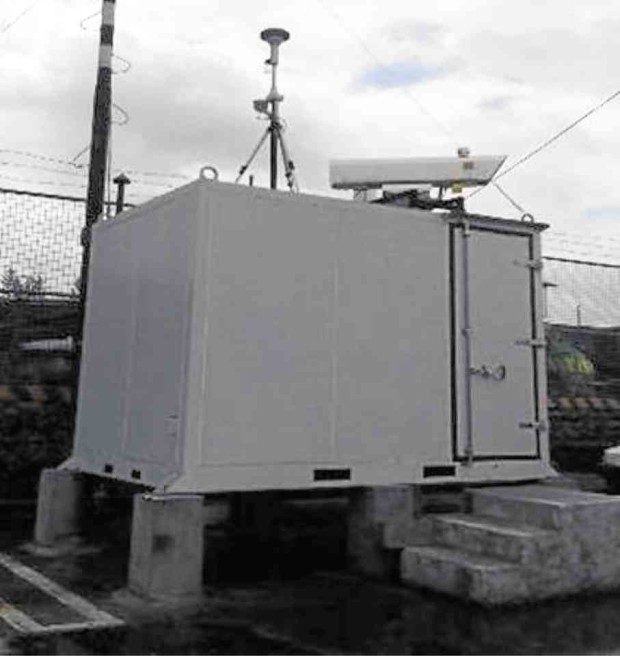DENR hit over ‘costly, idled’ air pollution monitors

The DENR air quality monitoring station in Marikina City, one of the 27 located across the country—photo from DENR-EMB
Two advocacy groups are calling for an audit of the air quality monitoring equipment used by the Department of Environment and Natural Resources (DENR), raising questions about their accuracy and cost-effectiveness.
Doubts were raised over the equipment’s reliability two days after the DENR released air pollution data in Metro Manila, which it said reached “extremely dangerous” levels because of the fireworks and firecrackers used during the recent New Year’s Eve revelry.
“We discovered that most of these expensive air monitor instruments are currently not properly working and some are even not functional anymore,” United Filipino Consumers and Commuters president Rodolfo Javellana said in a statement.
The Coalition of Clean Air Advocates of the Philippines (CCAAP) also assailed the decision of the DENR’s Environmental Management Bureau (EMB) to use the long-path Differential Optical Absorption Spectroscopy (Doas) system, rather than a point monitoring system, saying the former was “grossly disadvantageous to the government.”
Long-path devices measure air pollutants along a path. Under the Doas system, the pollutants and their concentration are measured based on their ability to absorb light.
Article continues after this advertisementA point monitoring system, on the other hand, measures “exactly what the human body would be exposed to as if that (person is) breathing the air at the monitoring station,” making it more suitable for air quality monitoring needs in the country, according to CCAAP technical consultant Emmanuel Galvez.
Article continues after this advertisement“Even in the United States, there are almost no installations that use a Doas system for air quality monitoring (because) it is expensive and limited in its usefulness,” Galvez said.
In a recent press briefing, DENR-EMB Officer in Charge and Assistant Director Jacqueline Caancan said the department was already consolidating the results of an investigation conducted last year on such allegations.
Caancan, however, belied allegations that the equipment was overpriced, saying the 21 Doas equipment in current use cost P10 million each, for a total of P210 million. She also maintained that their purchase went through proper bidding procedures.
She also pointed out that the DENR’s 27 monitoring stations nationwide cost P3 million each, for a total of P81 million—not “billions of pesos” as alleged by the two complaining groups.
Seven of the stations are located in Metro Manila.
Caancan said the department would conduct an inventory this month to determine the status of the air monitoring stations and equipment nationwide.
She admitted that some of them had already “bogged down” due to typhoons or intermittent electricity supply. “Definitely, the number (of nonoperational stations) won’t reach 50 percent of the total,” the official stressed.
Jean Rosete also the Doas system was an “equivalent” method for “prescribed” systems of air quality monitoring.
“Everything is aboveboard,” added Rosete, chief of the DENR-EMB Air Quality Management Section.
As to which system is better, Rosete said: “Point monitoring was just the first technology used (in other countries). (The Doas) is a more advanced technology. We’re looking at cost-effectiveness, too. In terms of maintenance cost, (Doas) is five times cheaper to maintain.”